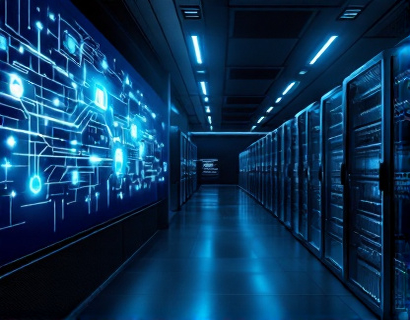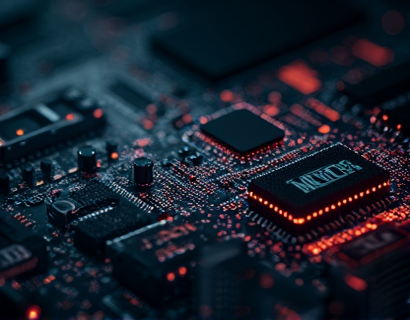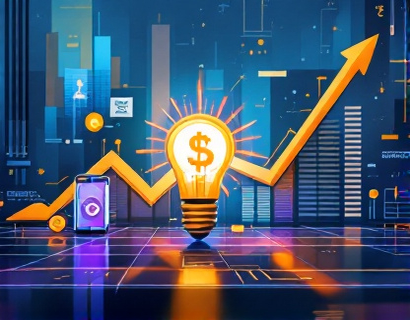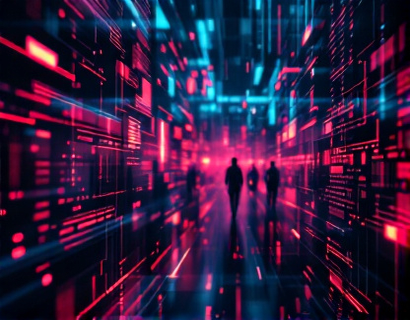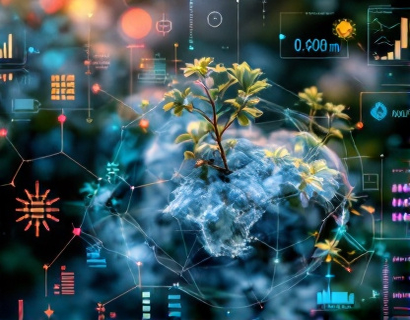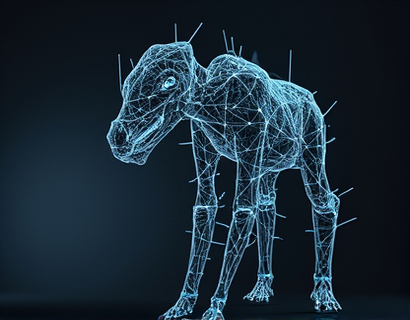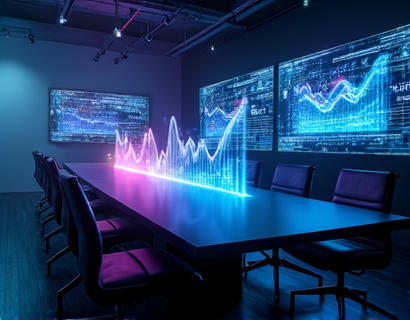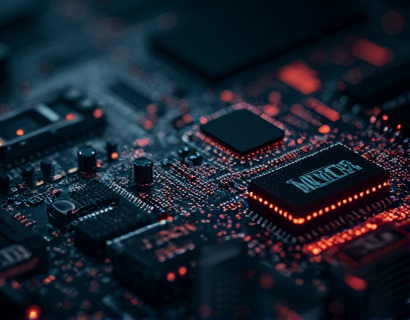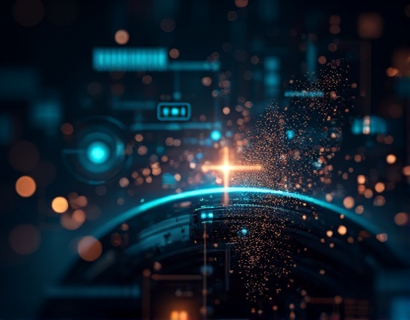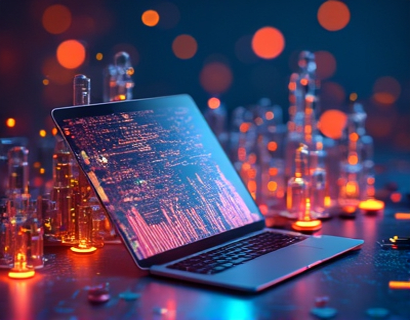Unlocking Next-Gen Productivity: The Synergy of Crypto and AI
The intersection of cryptocurrency and artificial intelligence (AI) is giving rise to a new era of productivity tools tailored for tech innovators and early adopters. This article delves into how the integration of these two cutting-edge technologies is revolutionizing the way we approach daily tasks and complex problem-solving. By leveraging the decentralized and secure nature of crypto, combined with the advanced computational capabilities of AI, a new generation of applications is emerging that promise to simplify and enhance productivity like never before.
Understanding the Basics: Crypto and AI
To fully appreciate the potential of crypto and AI integration, it's essential to understand the fundamentals of both technologies. Cryptocurrency, at its core, is a digital or virtual currency that uses cryptography for security and operates on a decentralized network, typically a blockchain. This decentralization ensures transparency, security, and reduces the need for intermediaries, making transactions faster and more cost-effective.
Artificial intelligence, on the other hand, encompasses a range of technologies designed to simulate human intelligence in machines that are programmed to think and learn like humans. AI algorithms can process vast amounts of data, identify patterns, make predictions, and automate tasks with increasing accuracy and efficiency. When combined, crypto and AI create a powerful synergy that can drive innovation across various industries.
Enhanced Security and Trust
One of the most significant advantages of integrating crypto with AI is the enhanced security and trust it provides. Blockchain technology, the backbone of most cryptocurrencies, offers an immutable and transparent ledger of transactions. When AI is applied to manage and analyze data on such a ledger, it can detect anomalies, prevent fraud, and ensure the integrity of the system. This is particularly valuable in industries where data security and trust are paramount, such as finance, healthcare, and supply chain management.
For tech innovators, this means developing applications that not only perform tasks efficiently but also maintain the highest standards of security. AI-driven security protocols can adapt to new threats in real-time, providing a dynamic defense mechanism that traditional security measures cannot match.
Automation and Efficiency
Automation is a cornerstone of productivity, and the combination of crypto and AI takes this to new heights. AI can automate complex tasks that traditionally required human intervention, from data analysis to decision-making processes. When these tasks are executed on a blockchain, the transparency and immutability of the transactions ensure that the automation process is reliable and trustworthy.
For example, smart contracts, self-executing contracts with the terms directly written into code, can be enhanced with AI to perform more sophisticated tasks. AI can analyze conditions, make decisions, and execute actions automatically, all while ensuring that the process is recorded on a blockchain for transparency. This not only speeds up processes but also reduces the risk of errors and fraud.
Personalized User Experiences
The integration of AI with crypto enables the creation of highly personalized user experiences. AI algorithms can analyze user behavior, preferences, and patterns to provide tailored recommendations and services. In the context of crypto, this means that users can receive customized financial advice, investment strategies, and even personalized digital assets.
Imagine an application that uses AI to analyze your financial data and crypto portfolio, then provides personalized insights and recommendations to optimize your investments. This level of personalization is only possible through the powerful data processing capabilities of AI, combined with the secure and transparent nature of crypto.
Decentralized Applications (DApps)
Decentralized applications, or DApps, are a prime example of how crypto and AI can revolutionize the way we interact with digital services. DApps run on a blockchain network and are not controlled by any single entity, ensuring greater freedom and control for users. AI can enhance DApps by providing intelligent features such as predictive analytics, natural language processing, and advanced user interfaces.
For instance, a decentralized social media platform powered by AI can curate content based on user preferences, detect and filter misinformation, and even manage digital identities securely. The decentralized nature of the platform ensures that user data is not centralized in one vulnerable point, reducing the risk of data breaches.
Supply Chain Optimization
Supply chain management is another area where the combination of crypto and AI can drive significant improvements. AI can optimize logistics, predict demand, and manage inventory with unprecedented accuracy. When integrated with blockchain, every step of the supply chain can be recorded and verified, ensuring transparency and traceability.
For tech innovators working in logistics or manufacturing, this means developing applications that can streamline operations, reduce costs, and enhance customer satisfaction. AI can identify bottlenecks and suggest optimizations, while blockchain ensures that all transactions and movements are securely and transparently recorded.
Financial Inclusion and Microtransactions
The integration of crypto and AI can also address issues of financial inclusion and facilitate microtransactions. Traditional financial systems often exclude a significant portion of the global population due to high fees and complex processes. Cryptocurrency, combined with AI-driven financial services, can provide a more accessible and efficient alternative.
AI can analyze financial data to offer microloans, manage savings, and provide financial advice to individuals who might otherwise be excluded from the traditional banking system. Microtransactions, which are often impractical with conventional payment systems due to high fees, become feasible with crypto. AI can optimize these transactions, ensuring they are secure, fast, and cost-effective.
Challenges and Considerations
While the potential of crypto and AI integration is vast, there are several challenges and considerations to keep in mind. Regulatory uncertainty remains a significant hurdle, as governments around the world are still grappling with how to regulate these emerging technologies. Tech innovators must stay informed about regulatory developments and ensure compliance to avoid legal issues.
Another challenge is the technical complexity involved in integrating crypto and AI. Developers need a deep understanding of both technologies to create robust and secure applications. Continuous learning and staying updated with the latest advancements are crucial for success in this field.
Additionally, there is the issue of scalability. As the adoption of crypto and AI grows, ensuring that applications can handle increasing amounts of data and transactions without compromising performance is essential. Innovations in blockchain technology, such as layer 2 solutions and sharding, are addressing these scalability concerns.
Future Prospects
The future of crypto and AI integration is bright, with numerous possibilities on the horizon. As the technologies mature, we can expect even more sophisticated applications that further enhance productivity and innovation. The convergence of these fields is likely to lead to breakthroughs in areas such as Internet of Things (IoT), augmented reality (AR), and virtual reality (VR).
For tech innovators and early adopters, staying at the forefront of this revolution means embracing these technologies and exploring their potential applications. The combination of crypto and AI is not just a trend but a fundamental shift in how we approach technology and productivity. By leveraging these powerful tools, the next generation of tech solutions will not only simplify daily tasks but also open up new frontiers of possibility.



